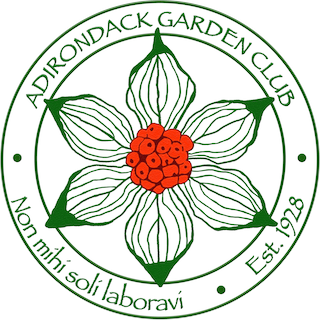AGC Public Zoom Event: Ticks—And What Makes Them Tick
Adirondack Garden Club lecture on Ticks—And What Makes Them Tick
ELIZABETHTOWN—Over 20 AGC members and guests met at the Adirondack History Museum on August 17, along with many members as well as the invited public who joined from their homes, for an enlightening presentation by The Wild Center’s Michael Trumbower called, “All We Should Know about Ticks to Protect Ourselves and Our Pets.” The lecture was delivered by Zoom, something AGC members have mastered during these challenging times.
Michael identified two main tick species as most prevalent in our area: the dog tick and the deer, or black-legged, tick, and reviewed the 2-year lifecycle of each, from eggs to nymph to adult. Ticks are most active from May to June, and again in October, but can also be an issue in winter when temperatures are above 45-50 degrees Fahrenheit.
Ticks pick up the diseases such as Lyme or Rocky Mountain Spotted Fever, which pose the greatest harm to humans, from small rodents, especially white-footed mice, and then transmit them while feeding. After attaching to human or other mammals, it takes a tick between 24 and 48 hours to transmit the disease.
Because of that, checking after venturing outdoors is key to preventing tick-transmitted diseases, as is being aware of tick habitat: along pathways, in moist areas. The rise in tick-borne illnesses is a result of climate change and rising temperatures, which have allowed ticks to expand their territory.
Other ways of preventing tick illnesses are the use of insect repellants such as Picaridin, Deet and Permethrin, treating clothing with these repellants or purchasing pre-treated clothing, wearing light-colored clothing when outdoors, and tucking pant legs into socks, along with checking, checking, and checking again after exposure.
Lastly, opossums eat ticks (another reason to not harm them) as well as chickens, guinea fowl, and wild birds.
Michael Trumbower is a naturalist at The Wild Center in Tupper Lake, as well as its School Programs Coordinator. Most recently, Michael has led the development of a suite of digital field trip programs to bring The Wild Center and nature to students and families wherever they are located.
Trumbower has a dual foundation in environmental science and science education, with a BS in Geology and Environmental Studies from St. Lawrence University and a Masters in Geological Sciences from the University of California, Riverside (UCR). At UCR Michael was part of the Global Climate and Environmental Change Master’s Program with a focus on climate change and paleoclimate. Prior to The Wild Center, Michael worked at Boston’s New England Aquarium as an outreach educator.
